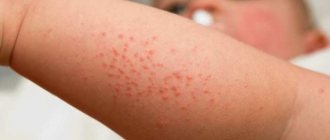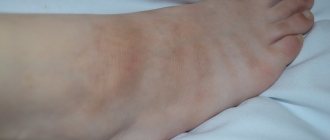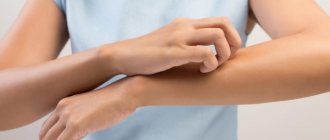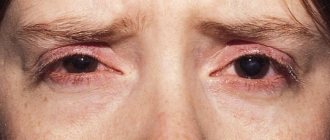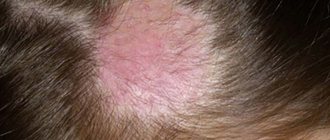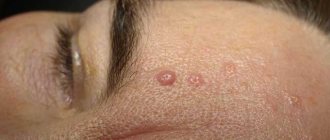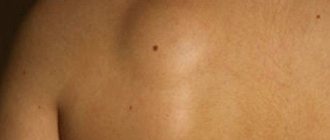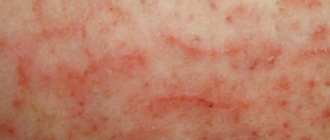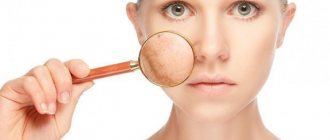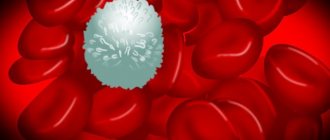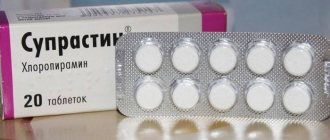What are skin spots
Rashes on the human body often have different appearance, size, shape (round, oval). A spot is a change in the shade of an area of the skin. The spots can take the form of a skin rash (small red dots) or large formations and occupy large areas, spreading over the entire back, abdomen, and legs. The rashes can be edged, scaly, of different colors, with shades of blue, orange, lilac, and white. Often, along with a change in color, the shape of the skin changes. This area rises above the rest of the surface, forming plaques, tubercles, and blisters.
The appearance of spots is often accompanied by itching, peeling, and pain. Sometimes their occurrence goes away without any alarming symptoms. If they are located in inaccessible places, a person may not immediately notice them. In many cases, skin lesions indicate the presence of some chronic diseases of the internal organs. Red spots on the body are often a sign of allergies. The occurrence of skin rashes sometimes indicates infectious diseases.
When to go to the doctor
If pigmented areas appear, you should consult a dermatologist. First, the doctor will conduct an external examination. Afterwards, the doctor will make a preliminary diagnosis and, if necessary, give a direction for further research.
If you have severe rashes, it is not recommended to delay your visit to a specialist. Ignoring them can aggravate the disease or lead to the spread of the process if there is a serious pathology.
If single small spots appear, you can postpone a visit to the doctor. Dermatologists recommend observing such rashes first. If there is no tendency to disappear within two to three days, especially if their appearance changes, consultation with a specialist is required.
You should immediately visit a doctor if you have the following symptoms:
- severe itching in the affected area;
- peeling on the surface of the spots;
- getting wet;
- rapid increase in size;
- pain when pressing and palpating;
- swelling;
- inflammatory process.
Causes
Partial changes in skin color are caused by various factors. They are external and internal. The first include exposure to sun, wind, frost, high temperature, and chemicals. Internal factors are diseases of various kinds that affect humans. This could be an infection or inflammation of the digestive system. Removing stains and rashes caused by external factors is an easier process. Often they do not require treatment and go away on their own.
In order to determine the reason for the strange spots on the body, you need to consult a dermatologist. After diagnosis, he must prescribe appropriate treatment. Common reasons why spots appear on the skin are:
- allergic reactions;
- thermal, chemical burns;
- diseases of a dermatological nature (lichen, eczema);
- fungal diseases;
- infectious diseases (rubella, chickenpox);
- chronic diseases of internal organs;
- disturbances in the functioning of the immune system;
- stressful conditions.
Red spots on the body
The most common type of skin formations on the human body are spots of reddish shades. If a red spot on the body itches, this is a sign of dermatological pathology or fungal infections. When you have candidiasis, itching and redness of the skin may occur. Different types of dermatitis, lichen, eczema appear as itchy and flaky reddish spots. Infections such as chickenpox, measles, meningitis are accompanied by the appearance of small rashes and spots of a dark red, crimson hue. All these diseases cause itching, often unbearable.
During allergic reactions, pimples and red spots appear on healthy skin. As a result of stress, dark red and burgundy spots sometimes appear on the neck and chest. They often disappear after the condition has stabilized. When there is a metabolic disorder, a rash appears on the face and hands. In all these cases, the appearance of spots can be either accompanied by itching or go away without it. Red spots on the body that do not itch sometimes appear due to disruption of the blood vessels. The appearance of vascular spots occurs mainly in older people.
- How to identify diseases by the hands - the main signs of organ diseases on the skin and nails
- Causes of red spots or dots on the skin of the face - types of manifestations, symptoms and treatment
- Causes of red spots on the face in children and adults - treatment
Dark
Light brown spots on the body are associated with sun exposure. This phenomenon is called "pigmentation disorder". After sunbathing, the skin may become covered with brown spots. This indicates an excess of melanin pigment in the body. In old age, women's skin is often covered with senile plaques of a dark brown or black color. Pigment formations are easily removed from the skin using lightening creams. Black spots can be a sign of diseases such as diabetes, polycystic ovary syndrome, cancer of internal organs.
Flaky
Very often, with dermatological pathologies, spots covered with scales appear on healthy areas of the skin. These are dead particles of the dermis affected by some disease. Peeling may be accompanied by itching. When combing them, the scales are removed, then the diseased area of the skin is covered with them again. Flaky spots on the body appear due to the following diseases:
- dermatitis;
- eczema;
- pityriasis versicolor and its other types;
- psoriasis.
Ringworm leaves spots on the skin with a clearly defined border. In a short time they spread throughout the body. With seborrhea, the skin is very flaky and itchy. Reddened areas on the human skin, accompanied by peeling, occur due to fungal infections. The skin may begin to peel and turn red due to dryness or exposure to low temperatures.
Pink
Skin lesions that look like pinkish spots often occur due to atopic dermatitis. This is a manifestation of an allergic reaction of the body. It can be caused by the consumption of any products, dust, or contact with chemicals. Sometimes pink spots occur due to a person’s unstable psycho-emotional state. The localization of the rash covers the neck, face, arms, and chest.
With a disease such as pityriasis rosea, spots appear on the back, thighs, and sides. The disease is activated when immunity is reduced, after suffering from infectious diseases. Ringworm, which causes pinkish rashes, occurs in childhood. Mostly the disease affects skin areas on the child’s head, but sometimes it is localized on the face and neck.
Dry
Due to insufficient moisture, the skin dries out and becomes rough. Dry spots on the face, hands, and neck occur with prolonged exposure to the sun. The same effect is produced by wind and frosty weather. The appearance of dry spots can be caused by pathologies of the gastrointestinal tract. Lack of nutrients affects the condition of human skin. Dry pinkish or red spots often appear as an allergic reaction to external irritants.
White scaly spots
If the skin rash looks like light, rough spots, it is most likely pityriasis versicolor. It is also called sun fungus. With this disease, an inflammatory process begins in the stratum corneum of the dermis. The affected cells die, forming scales. The spot begins to itch and peel. Characteristic signs of this type of lichen are the presence of light spots on a dark-skinned body. On pale skin, the formations have a yellow-brown tint.
Red convex
Redness on the skin in the form of spots often takes the form of blisters, shiny plaques, and swelling. Similar marks appear after bites of blood-sucking and stinging insects. The center of the bite may swell and begin to swell - this is the body’s reaction to the injection of poison under the skin. Many infectious diseases are characterized by the appearance of red purulent formations and blisters. For example, with chickenpox, red bumps form with an abscess in the middle, which then become crusty. Similar rashes may appear in case of skin damage with eczema and psoriasis.
- Ringworm on the leg of a child and an adult - causes, types of disease and symptoms, diagnosis
- Ring-shaped erythema: causes and treatment in children and adults
- Ringworm on the arm of a child or adult - types and causes of the disease, symptoms, diagnosis and treatment
Gray
Grayish spots on the human body are caused by such a dangerous disease as cancer. In this case, the skin formations are characterized by a smooth surface. Pigment spots that appear in the sun can also be gray in color. These are flat rashes that appear in people in old age. Spots with gray scales also occur when infected with one of the types of lichen.
Purple spots on the face
In the presence of diseases of the blood and internal organs, the nose, forehead, and cheeks are often covered with bluish spots. This is caused by the presence of diseases such as leukemia, thrombocytosis, liver failure. Purple spots cause the following rare diseases:
- flaming nevus;
- Cobb syndrome;
- Kaposi's sarcoma;
- marbled skin syndrome.
Cosmetology procedures
How to treat red spots on the face (itch and peel)
After making a diagnosis and describing the treatment by medical specialists, along with drug therapy, various procedures are recommended, including cosmetic ones:
- phototherapy – treatment with light waves of different spectrum;
- mesotherapy – with the help of various cocktails, excess pigment simply “dissolves”;
- cryotherapy – cauterization of dry formations with liquefied nitrogen;
Getting rid of spots with cryotherapy
- chemical peeling - acids are used that remove pigmented areas;
- physiotherapeutic procedures are very effective for autoimmune dermatological problems.
Diagnostics
In order to get rid of unpleasant skin rashes, it is necessary to accurately diagnose. The prescription of adequate treatment depends on this. Medicines are prescribed only by a doctor based on diagnostic studies. This process begins with a patient interview and physical examination. This is followed by a laboratory examination using special equipment. The following studies are being carried out:
- Dermatoscopy . Assessing the condition of the dermis using a visual inspection tool for skin lesions.
- Tissue analysis. A scraping is taken from the affected area. Skin particles are examined under a microscope to identify parasites.
- Blood analysis . This method determines the presence of inflammation in the body.
- Bacteriological research . The doctor takes a swab and conducts tests to identify microorganisms.
Dark spots
This type of spots are specific white or dark areas that appear on the surface of the skin as a result of changes in the content of melanin pigment in it. They are divided into:
- Hyperpigmented , which are formed due to a sharp increase in pigment production in a certain area of the skin. By their nature, a person can have them from birth (lentigines and birthmarks) or appear during his life (chloasma or freckles).
- Hypopigmented , which are formed due to decreased melanin production. They are also present in a person from birth, or are acquired by him during the course of his life. In the latter case, they are caused by skin diseases such as eczema, lichen, psoriasis, and vitiligo.
Pigment spots are characterized by an irregular shape, but clear boundaries, and wide variability in size - from small (0.5 cm) to large (10 - 15 cm).
Treatment
In order to remove stains from the body, it is necessary to find out the cause of their occurrence. Therapy is prescribed by a specialist based on laboratory data and information received from the patient. Treatment depends on the type, form, and nature of the disease that caused the spots to appear. The following types of medications can be used for therapy:
- antihistamines;
- antifungal;
- anti-inflammatory;
- antibiotics;
- vitamins.
Treatment of serious diseases is carried out comprehensively, using several groups of drugs. If the disease is mild, only topical medications are often used. Medicines are available in the form:
- tablets;
- ointments, creams, sprays;
- solutions, tinctures.
Ketoconazole
Ketoconazole is an effective antifungal agent. The active substance of the drug powerfully suppresses the activity of fungi and destroys their cellular structure. The product is used to eliminate formations on the skin caused by dermatological diseases. It is prescribed for pityriasis versicolor, seborrhea, and various types of mycoses.
Ketoconazole is well tolerated by the body and has almost no contraindications. The course of treatment is 2-8 weeks. A distinctive feature of the drug is that it quickly eliminates skin rashes. A plus is the possibility of using the medicine for pregnant women. The disadvantages of this product include a large number of side effects.
Metronidazole
Metronidazole is a broad-spectrum antibiotic. This is one of the best modern medicines. It is a highly effective antimicrobial drug. The active substances of metronidazole destroy many types of bacteria and reduce the risk of recurrent diseases. It is used to treat complex infectious diseases and chronic diseases of internal organs.
The advantage of Metronidazole is the successful treatment of acne, lichen, and purulent formations on the skin. The disadvantages include the presence of many side effects. Among the undesirable manifestations are dysfunction of the nervous system, disorders of the esophagus, urinary tract, and allergic rashes on the body. The medicine has good reviews from doctors and patients.
Claritin
Claritin is an antihistamine that successfully eliminates allergy symptoms in adults and children. Used to treat urticaria, allergic dermatitis, and other skin diseases accompanied by rashes. In addition to the active substance - loratadine, it contains natural elements and flavorings. The medicine is not addictive, which is a big plus. It can be used for a long time without fear of harm to health.
A distinctive characteristic of the product is that it quickly relieves allergy symptoms without causing dryness of the dermis. The drug has many advantages: it can be prescribed to small children, has almost no contraindications, is well tolerated by the body, and side effects are rare. The only disadvantage is that it is recommended to avoid it during pregnancy and lactation.
Vascular spots
Such spots are red in color and have a mostly smooth surface, but sometimes they may have a slightly rough surface. Usually they are located flush with the skin, but sometimes they can still protrude somewhat above its surface.
Burgundy spots on the skin are divided into:
- Hyperemic (i.e. overflowing with blood), having inflammatory and non-inflammatory origin. In the first case, the spots are formed as a result of the expansion of blood capillaries due to the inflammatory process and can be of various sizes - less than 2 cm in diameter (roseola). In the second case, the spots are larger than 3 cm (erythema). The formation of such defects on the skin is also caused by the dilation of blood vessels, but it occurs due to various strong emotions (feelings of shame, rage, anger or anger). They are most often found on the face, chest and neck.
- Hemorrhagic. They are formed due to hemorrhages in the skin due to external strong mechanical action or as a sign of certain diseases affecting blood vessels. These may be ordinary bruises, then they disappear on their own after 1 or 2 weeks, but in other cases more serious therapy will be needed.
Vascular spots come in various shapes and are most often small in size, which often merge together into one large red formation.
How to treat
If doctors were able to determine why the red dots appeared on the body and what they mean, then appropriate treatment is prescribed. First of all, the diet changes. To improve the functioning of the circulatory system and normalize metabolism, the patient is recommended to eat a gentle diet with a minimum amount of fatty and fried foods.
Treatment of red spots
Additionally, various stain removal procedures are used:
- Laser resurfacing is widely used to treat angiomas. Fractional laser allows you to gently remove bloody tumors without damaging healthy areas. In case of individual contraindications, acid peeling can be used instead of thermal effects;
- To remove acne marks, scratches from hair removal or itchy bites, special ointments are used. Depending on the nature of the occurrence, these may be antibacterial drugs, steroidal and non-steroidal substances;
- Any red spots on the skin disappear only with careful treatment and an integrated approach. In addition to following doctors' recommendations, you also need to spend a lot of time in the fresh air and periodically take sunbathing (only with permission).
Reviews from forums claim that with the right approach, bloody marks, regardless of the factors of their occurrence, will significantly decrease after 14 days. You can get rid of lichen and hemangiomas within 2 months.
What to do if your child has red dots or spots
Red spots may suddenly appear on the child's body. There are many diseases that cause such trouble. The symptom indicates that urgent action needs to be taken. Self-medication is strictly prohibited, especially if the condition is accompanied by vomiting, diarrhea, or fever, so immediately consult a doctor for a diagnosis. Redness may be symptoms of the following diseases:
- Measles - up to 4 days the symptoms are similar to ARVI, after which the face becomes covered with red spots, then they fall on the chest, stomach, legs.
- Scarlet fever is characterized by a pinpoint bright red rash of small diameter that quickly spreads throughout the body, excluding the nasolabial triangle. The tongue and mucous membranes become bright crimson.
- Rubella is a small pink rash on the chest, back, face, fever up to 38 degrees.
- Chickenpox - red spots after a couple of days turn into papules filled with fluid, causing severe itching.
- Roseola – the causative agent of the disease is considered to be the herpes virus. The incubation period is 5-15 days.
- Ringworm is the appearance of red raised spots with peeling.
- Miliaria is a small red rash where clothing meets the skin. Often occurs in infants who wear diapers. The rash does not itch and does not bother the baby. Baths with infusions of calendula, chamomile, walnut leaves, using baby powder, and wearing natural clothing that absorbs sweat help.
- Allergies are the most common cause of red spots on the body. The disease can occur as a reaction to anything (new food, baby cosmetics, formula, diapers).
- Red blister from burns, mosquito bites.
Types of stains
An itchy rash can be caused by an infectious agent or allergen. It can be irregular, round or oval in shape with a diameter of 0.1-6 cm, elevated or at the level of healthy skin.
Red spots can be:
- up to 0.5 cm in size (roseola);
- in the form of a pinpoint or large-spotted rash, consisting of spots up to 2 cm;
- erythema;
- intra- and subcutaneous hemorrhages.
Erythema, as a rule, is a response to physical or emotional stress, and is not associated with any pathology. Red spots can be caused by a mask or scrub, or after a massage session.
They usually appear after expansion of the capillary network and increased blood circulation in a specific area of the skin. The epidermis changes its natural color if the skin is affected by psoriasis, neuro- and photodermatitis. There are about 8 dozen diseases in total that are accompanied by a spotty rash on the skin.
The most common include:
- disturbances in the functioning of the autonomic nervous system;
- bites;
- connective tissue lesions;
- helminthiases;
- infection of the body;
- allergies and other immune pathologies.
For slight redness of the skin, accompanied by mild itching and swelling, a bath with the addition of potassium permanganate or sea salt is recommended. The inflammatory process can be relieved by Zyrtec and Fenistil drops taken orally. Gel "Fenistil" helps relieve itching.
The doctor chooses a treatment regimen, taking into account the trigger mechanism, which resulted in symptoms such as pain and swelling. Sometimes the disease is recognized only by a rash.
The appearance of red spots can be caused by parasitic infections that release toxins that poison the body and worsen the condition of the skin. The intensity of inflammation affects the color of the rash.
Measles rubella
It is characterized by the appearance of a finely spotted red rash on the buttocks, back, neck and face. The doctor prescribes antihistamines and antipyretic drugs. A soda bath, prepared at the rate of one pack of soda per bath, relieves itching.
Ringworm Zhibera
It begins with the appearance of one large pink maternal plaque 3-5 cm in size. Over time, many small spots appear around it. Pityriasis rosea is associated with activation of the herpes virus in conditions of weakened immunity. The treatment regimen is chosen by the doctor, taking into account many individual indicators and parameters.
Lichen spots
Ringworm is one of the most common skin diseases that are of viral or bacterial origin. Its appearance is manifested by specific changes in the skin, and in some cases also by incessant itching and pain. Usually, the start of lichen is a general drop in the level of immunity against the background of previous infections or chronic physical or mental fatigue.
There are the following types of lichen:
- Pityriasis rosea . It looks like pink or red clearly defined areas of the skin. It is flaky and itchy from time to time. The causative agent of this type of lichen are the viruses responsible for the occurrence of herpes types 6 and 7.
- Lichen planus . These are small spots of dark red, almost blue color that can appear not only on the surface of the skin, but also on the mucous membranes.
- Shingles . These are red-colored inflamed spots, the entire surface of which is dotted with small bubbles with initially transparent, and later cloudy liquid.
- Pityriasis versicolor . These are pale, sometimes slightly flaky areas of the affected skin.
- Ringworm . These are flaky and itchy pink-red patches on the skin. They are accompanied by thinning of hair in the affected area.
All types of lichen are subject to mandatory treatment.
Prevention of spots on the body
To minimize the likelihood of any blemishes appearing on the skin, you should adhere to the following recommendations:
- lead a healthy lifestyle;
- adhere to a nutritious diet;
- introduce natural products into the diet;
- engage in age-appropriate sports;
- completely quit bad habits;
- avoid stressful situations;
- use only proven household chemicals.
Such precautions will keep your skin healthy and clean for a long time.
When to be wary
In order not to trigger a serious disease, when dry spots appear on the skin, you need to pay attention to these features:
- the spot increases in size, capturing new areas of the skin;
- self-selected treatment methods do not produce results;
- treatment provides relief, but after its discontinuation the disease again enters the acute phase;
- unpleasant sensations arise: itching, burning, pain;
- The structure of the skin changes: cracks appear, papules and pustules form, peeling is observed;
- similar symptoms are observed in people with whom the sick person comes into contact (the disease can be contagious).
Sun marks
Causes of dark spots:
- After tanning, dark patches may appear on the skin due to excess melanin production.
- The cause will be various diseases of the internal organs.
- Doctors do not advise people with liver disease to stay in direct sunlight for long periods of time.
- If there are problems with the thyroid gland, then there is a high probability that this is the cause of increased pigmentation.
5 useful tips to help avoid pigmentation:
- While on vacation at sea, stop taking hormonal medications.
- Do not use antibiotics.
- Before sunbathing, it is forbidden to use perfume.
- Preference should be given only to reliable tanning products.
- Do not take sedatives.
Compliance with the described rules will significantly reduce the risk of developing increased pigmentation. If it does appear, you need to consult a dermatologist.
How to remove a patchy tan:
- Take hot baths often using a hard washcloth;
- Exfoliating scrubs and gels are effective;
- Post-exposure medications and toning agents will help.
Autoimmune diseases
The formation of red spots on the skin can also be caused by autoimmune diffuse diseases (for example, lupus erythematosus or scleroderma). In the first case, spots appear as a consequence of the activation of a chronically ongoing pathological autoimmune process, and in the second, spots form in areas of scarred skin changes.
These same diseases include psoriasis, a disease that occurs against the background of malfunctions of the immune system.
In this disease, pathological foci are located mainly in the thickness of the dermis, but if the situation worsens, spots may also begin to affect the joints, scalp and nail plates.
The doctor's consultation
If there are red spots, you should consult a dermatologist. Only a specialist will be able to identify the cause based on the results of tests performed on the patient. When the diagnosis is made, strictly follow all the doctor’s instructions and treat diligently. If it was an infection of the epidermis, it is worth excluding the possibility of repeated infection; in case of autoimmune diseases, consult a specialist to alleviate the condition. Never try to remove red spots yourself, do not rub or comb them, follow the rules of hygiene.
Which doctor should I contact if blue spots appear?
In all other cases of this kind of spots, it is necessary to urgently consult with doctors who will tell you how and how to treat them:
- Dermatologist;
- Dermato-venereologist;
- Allergist;
- Hematologist;
- Infectious disease specialist;
- Surgeon;
- Oncologist,
who, after diagnostics and research, will make the correct diagnosis, find out the cause and origin of these formations, and also prescribe adequate therapy aimed at eliminating the root cause.
Red spots may be the result of an allergic reaction to unnatural fabrics, contaminated water, aggressive detergents, or food. In this case, the allergist may prescribe antihistamines upon visual inspection or after testing.
Lilac spots, if they are not the result of tattooing or pregnancy, must be diagnosed. During pregnancy, spots of this kind form at the site of so-called stretch marks (skin, characterized by insufficient elasticity and special elasticity, can stretch greatly as the fetus grows in the womb).
If the spots do not disappear, but rather grow or bleed, you should immediately consult a doctor for advice.
The etiology of spots of this color can be very different; it can be a sign of genetic diseases, as well as pathological changes in the body.
